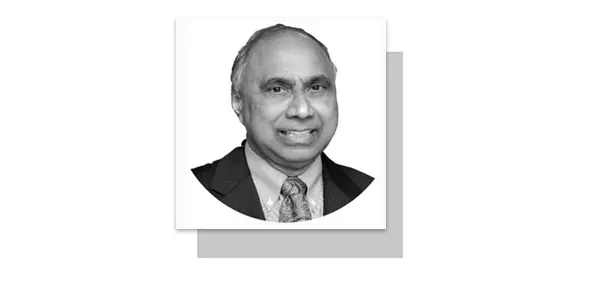NAWAZ Sharif, the former Prime Minister of Pakistan, returned to his homeland after spending nearly four years in exile in London. His return has raised considerable conjecture about what it means for Pakistan’s future. “It appears that we are in another pendulum swing of Pakistani politics – back again to Nawaz Sharif,” Madiha Afzal, a fellow at the Brookings Institution think-tank, said in an interview. If Afzal is correct, here is what Sharif brings and his tenure has meant for Pakistan’s past.
Nawaz Sharif served as the Prime Minister of Pakistan three times, from 1990 to 1993, 1997 to 1999 and 2013 to 2017. He is the leader of the Pakistan Muslim League-Nawaz (PML-N), one of the two major political parties in Pakistan. Sharif was born in Lahore, Pakistan in 1949. He came from a wealthy industrialist family and made his fortune in the steel and textile industries. He entered politics in the late 1980s and was elected Prime Minister for the first time in 1990. His first term in office was marked by economic growth and political stability. He was overthrown in a military coup in 1999 during his second term.
Sharif returned to power in 2013 and launched a number of ambitious infrastructure projects, including the construction of new roads, power plants and airports. He emphasized economic resurgence during his third tenure characterized by a growth rate of 5.8% and inflation hovering around 4% in 2017.
However, Sharif’s government was also plagued by corruption, scandals and allegations of financial wrongdoing. He was disqualified from office by the Supreme Court in 2017. Sharif’s return to Pakistan is a significant moment for the country. He has a sizable electoral base in Punjab, the country’s largest province. His reappearance might energize his party and followers. “Sharif’s main goal is to unite his party, PML-N, and regain political power in the upcoming elections,” said Michael Kugelman, Director of the South Asia Institute at the Wilson Center, but acknowledges that PML-N faces internal rifts and a decline in popularity due to past challenges.
Kugelman has commented that Khan’s absence from the political scene and concerns for his safety limit his ability to mobilize support for the PTI. Kugelman has also observed that economic hardships, heightened political divisions and perceived institutional shortcomings are fostering a sense of cynicism among all Pakistani voters. This trend is concerning, as a pervasive feeling of powerlessness seldom leads to positive outcomes. Given all of this, what can Sharif do to restore the confidence of the electorate and produce positive future outcomes for Pakistan?
In general, he could assume the role of uniter rather than a divider of the Pakistani people. Here are some of the actions Sharif might take to accomplish this. He could call for the release of Imran Khan as a gesture of goodwill and to promote reconciliation in the country. Khan is a popular leader and his release would help calm tension and create a more conducive environment for political dialogue. Sharif could help create a level playing field for the next general election by asking the government to take steps to ensure fair and free elections. He could also urge all political parties to recognize the election results.
Pakistan is facing a number of challenges, including a struggling economy, high unemployment and terrorism. These conditions have intensified in the past several years. The government needs to take steps to revive the economy, such as attracting foreign investment and promoting exports. The government also needs to have a plan to drive employment upward and to continue to work to eliminate terrorism.
Sharif could draw upon his proven experience and expertise to recommend proposals to improve the economy, increase employment and reduce terrorism. He could also collaborate with fellow political leaders to develop effective solutions to address the prevailing challenges. These actions would help strengthen the Pakistan democracy. Freedom House which evaluates all of the countries in the world in terms of their political rights and civil liberties rates Pakistan as “partly free” giving it a score of only “37” out of “100” points. This score has declined slightly since 2017.
In conclusion, Nawaz Sharif’s return to Pakistan marks a pivotal moment for the nation’s democratic landscape. It represents an opportunity for a resurgence of civic collaboration and leadership in the country. Time and Sharif’s decisions and actions will tell what his return will mean for Pakistan. My sincerest wish is that it will move the nation and its people forward to better, fairer and freer times.
—The writer is an Entrepreneur, Civic Leader and Thought Leader based in Washington DC. The views expressed here are personal.
Email: [email protected]
views expressed are writer’s own.










